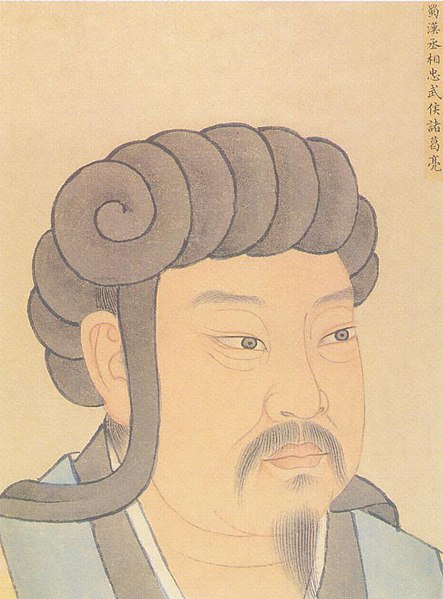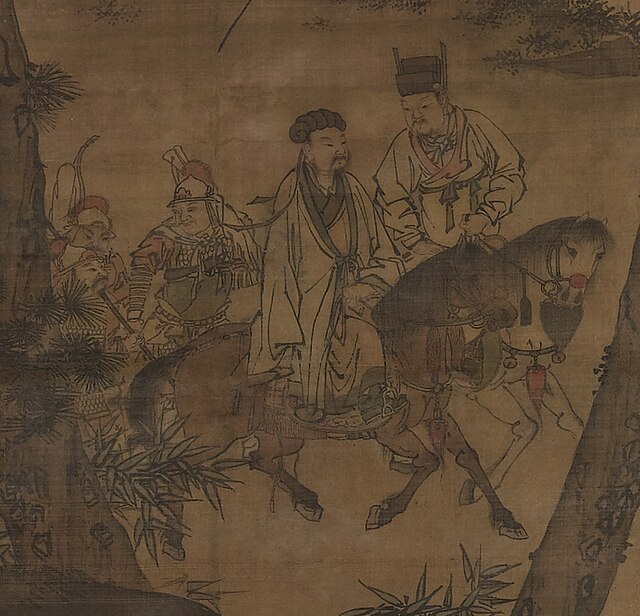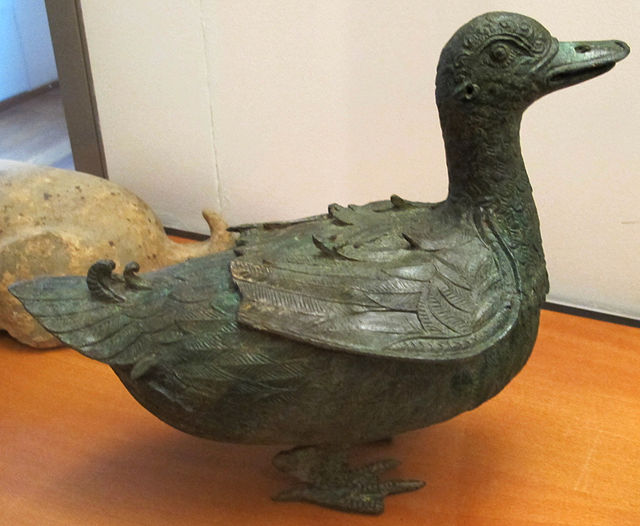Zhuge Liang, also commonly known by his courtesy name Kongming, was a Chinese statesman, strategist, and inventor who lived through the end of the Eastern Han dynasty and the early Three Kingdoms period (220–280) of China. During the Three Kingdoms period, he served as the Imperial Chancellor of the state of Shu Han (221–263) from its founding in 221 and later as regent from 223 until his death in September or October 234.
An illustration of Zhuge Liang
Zhang Feng's painting (1654) depicting Zhuge Liang reclining on a daybed
The painting Kongming Leaving the Mountains (detail, Ming dynasty), depicts Zhuge Liang (left, on a horse) leaving his rustic retreat to enter into the service of Liu Bei (right, on a horse)
Outline of the Longzhong Plan.
The end of the Han dynasty was the period of Chinese history from 189 to 220 CE, roughly coinciding with the tumultuous reign of the Han dynasty's last ruler, Emperor Xian. It was followed by the Three Kingdoms era. During the end of the Han dynasty, the country was thrown into turmoil by the Yellow Turban Rebellion (184–205). Meanwhile, the Han Empire's institutions were destroyed by the warlord Dong Zhuo and fractured into regional regimes ruled by various warlords, some of whom were nobles and officials of the Han imperial court. The warlord Cao Cao took control of Emperor Xian and his court in 196 and began gradually reunifying the empire. Cao Cao ostensibly operated under Emperor Xian's rule, though in reality the emperor was a hostage.
Late Han fresco of 9 chariots, 50 horses, and over 70 men, from a tomb in Luoyang
Eastern Han incense burner and bronze sculpture in the shape of a duck
An Eastern Han prancing horse, bronze sculpture, 2nd century
An Eastern Han stone-carved tomb guardian (Tianlu); City Museum of Luoyang








